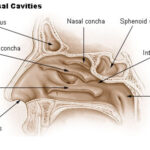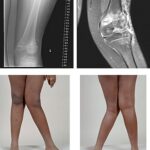Riboflavin, also known as vitamin B2, is a water-soluble vitamin critical to numerous cellular processes. It acts as a precursor to flavin mononucleotide (FMN) and flavin adenine dinucleotide (FAD), both essential coenzymes in redox reactions, energy production, and metabolism of fats, drugs, and steroids.
Riboflavin also supports the maintenance of healthy mucous membranes, skin, eyes, and nerve functions. Since it is not stored in large amounts in the human body and is continuously excreted in urine, a consistent dietary intake is essential.

Pathophysiology of Riboflavin Deficiency (Ariboflavinosis)
Riboflavin deficiency disrupts multiple metabolic pathways, especially those involving energy production and antioxidant defense. A deficiency affects enzyme systems requiring FMN and FAD, leading to impaired electron transport, defective fatty acid oxidation, and increased oxidative stress.
Causes and Risk Factors of Riboflavin Deficiency
1. Inadequate Dietary Intake
- Common in regions with limited access to dairy, meats, or fortified cereals
- Vegetarian or vegan diets lacking variety can be deficient
2. Malabsorption Syndromes
- Celiac disease, Crohn’s disease, and chronic diarrhea impair riboflavin absorption
- Alcoholism interferes with both absorption and metabolism
3. Increased Requirements
- Pregnant or lactating women
- Infants and adolescents during periods of rapid growth
- Individuals with hyperthyroidism or chronic infections
4. Medication-Induced Deficiency
- Chronic use of phenobarbital, chlorpromazine, or tricyclic antidepressants may interfere with riboflavin utilization
Clinical Manifestations of Riboflavin Deficiency
Riboflavin deficiency, or ariboflavinosis, is characterized by a range of mucocutaneous and ocular symptoms. These can progress gradually and become severe if untreated.
Common Symptoms
| System Affected | Clinical Signs and Symptoms |
|---|---|
| Oral cavity | Angular cheilitis, stomatitis, sore throat |
| Eyes | Photophobia, itching, corneal vascularization |
| Skin | Seborrheic dermatitis (especially around nose and ears) |
| Neurological | Fatigue, weakness, irritability |
| Hematological | Normocytic anemia in chronic cases |
Diagnostic Approach
1. Clinical Evaluation
A careful nutritional history and symptom assessment often suggest riboflavin deficiency. Physical signs such as fissured lips and a magenta-colored tongue are characteristic.
2. Laboratory Tests
- Erythrocyte glutathione reductase activity coefficient (EGRAC): A reliable biomarker; values >1.2 indicate deficiency
- Plasma riboflavin concentration: Less reliable due to daily fluctuations
Treatment and Management Strategies
1. Dietary Correction
Encouraging the intake of riboflavin-rich foods is the foundation of treatment. These include:
- Dairy products (milk, yogurt, cheese)
- Eggs and lean meats
- Green leafy vegetables (spinach, broccoli)
- Fortified cereals and grains
- Almonds and mushrooms
2. Pharmacologic Supplementation
In clinically significant deficiency:
- Adults: 5–10 mg/day of riboflavin orally for several weeks
- Children: 3–5 mg/day
- In cases of malabsorption, parenteral administration may be considered
Prevention of Riboflavin Deficiency
- Fortification Programs: Implementing fortified cereals and dairy products in low-resource settings
- Public Health Education: Promoting awareness about balanced nutrition
- Monitoring At-Risk Populations: Especially pregnant women, elderly, alcoholics, and those with chronic gastrointestinal diseases
Complications of Untreated Riboflavin Deficiency
If left unaddressed, riboflavin deficiency can lead to:
- Chronic fatigue and decreased work productivity
- Severe anemia and failure to thrive in children
- Corneal damage and vision loss
- Increased risk of preeclampsia in pregnant women
- Neurological impairments from disrupted energy metabolism
Riboflavin in Clinical Practice: Additional Roles
Beyond its role in preventing deficiency symptoms, riboflavin has been studied in:
- Migraine prophylaxis: High doses (400 mg/day) have shown efficacy in reducing migraine frequency
- Mitochondrial disorders: As supportive therapy in complex I deficiency
- Cancer and aging research: Due to its role in cellular oxidative stress management
Riboflavin deficiency is a preventable and treatable condition with wide-reaching systemic implications. Through appropriate dietary intake, targeted supplementation, and vigilance in high-risk populations, we can effectively manage and prevent the consequences of ariboflavinosis. Riboflavin’s essential role in energy metabolism and cellular protection underscores its importance in both public health and clinical medicine.

